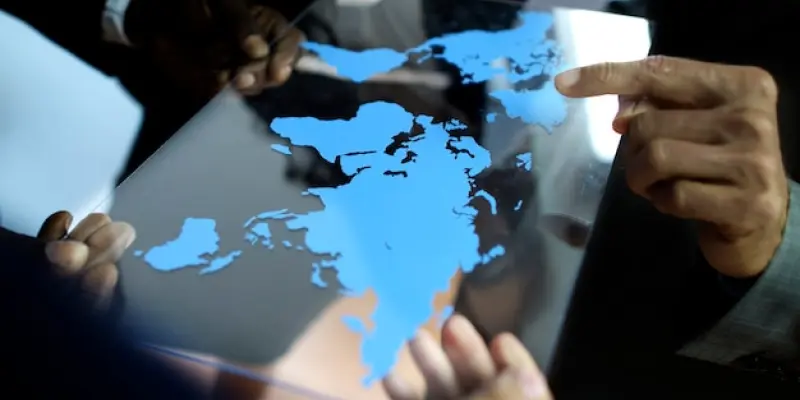Geopolitical tensions and trade disruptions have emerged as pivotal forces influencing the global labor market. Originally, the International Labour Organization (ILO) anticipated robust employment growth, estimating the creation of 60 million jobs by now. However, they have revised this forecast, reflecting a shortfall of 7 million jobs. This downturn correlates with reduced GDP growth projections by the International Monetary Fund (IMF), which now estimates 2.8% growth, down from an earlier forecast of 3.2%. This article delves into the implications of these revisions, highlighting how geopolitical uncertainties have reshaped workforce dynamics across various regions.
Impact on Regional Employment
Asia-Pacific’s Vulnerability
Currently, approximately 56 million jobs in this region heavily rely on the demand generated by U.S. consumers. This reliance makes the region vulnerable to any shifts in geopolitical climates or trade policies that could adversely affect market demand. The ILO warns that continued trade disruptions and political uncertainties could accentuate these vulnerabilities, further threatening employment stability. Such threats have led economists to call for strategic diversification and innovation to mitigate dependency on singular economic factors, fostering a resilient labor market capable of weathering geopolitical storms and maintaining sustainable growth.
Stagnation in Europe and Central Asia
Despite global fluctuations, Europe and Central Asia have managed to maintain a stable employment growth trajectory. Nevertheless, the predicted growth rate of 0.6% is far from ideal, indicative of stagnation rather than expansion. Economic analysts attribute this stability to comprehensive industrial policies and strong regulatory frameworks that ensure market confidence even amidst pervasive global uncertainties. These regions have focused on bolstering sectors less susceptible to geopolitical risks, such as technology and sustainable energy, to support employment. However, the need for aggressive strategies to address future challenges persists, aiming to energize growth beyond current projections and secure a more vibrant economic landscape.
Employment Growth Trends
Declining Global Labor Income Share
The global labor income share has seen a notable decrease over the past decade, dropping from 53.0% to 52.4%. This trend underscores a broader pattern where economic growth does not translate seamlessly into tangible worker benefits. Had this income share remained stable, total labor income would have been substantially higher, presenting a stark contrast against rising global GDP figures. This decline signifies a growing disconnect between economic development and equitable income distribution, exacerbating issues of inequality across various demographics. In Africa and the Americas, the drop in income share is particularly pronounced, putting additional pressure on workers to adapt and seek sustainable livelihoods amid shifting economic paradigms.
Shifts Towards High-Skilled Labor
A notable shift towards high-skilled labor has characterized the recent evolution of the labor market. Women have played a significant role in this transition, with their representation in high-skilled jobs increasing notably over the past years. Currently, women’s participation in high-skilled roles stands at 23.2%, compared to men’s participation at 18.0%. However, the labor market still faces challenges linked to educational mismatches. Many workers find their academic qualifications misaligned with job requirements, leading to an increase in overeducated individuals while undereducated workers have seen slight reductions. Addressing these discrepancies through targeted education reforms and strategic workforce planning remains crucial for optimizing labor market efficiency and productivity.
Technological Transformations in Employment
Influence of Generative AI on Job Dynamics
Generative AI is positioned to revolutionize various employment sectors, significantly impacting the skill composition of jobs. Analysis indicates that medium-skill positions are most vulnerable, with approximately 38.1% affected by AI advancements. High-skill roles are not immune either, with 35.3% experiencing transformations due to technological innovations. Conversely, low-skill positions show minimal impact, with a discernible effect on only 0.8% of such jobs. The ongoing evolution necessitates a proactive approach in restructuring skill development frameworks, investing in AI-enhanced capacities, and fostering adaptable labor markets that can sustain growth while integrating new technological paradigms seamlessly into existing economic systems.
Calls for Strategic Workforce Enhancement
In light of these dynamic changes, the ILO Director-General, Gilbert F. Houngbo, has highlighted the urgency for comprehensive strategic initiatives. Emphasizing enhancing social protection, he advocates for investments in skill development that cater to emerging technologies, fostering inclusive labor markets that democratize opportunities for all demographics. Furthermore, promoting social dialogue is essential in navigating the evolving technological landscape, ensuring equitable benefits from these transitions. These strategic measures could present viable pathways to overcome present challenges and capitalize on transformational opportunities, ensuring robust and equitable global employment prospects amid fast-paced technological and geopolitical changes.
Future Considerations
Geopolitical tensions and trade disruptions have become key factors affecting the global labor market. Initially, the ILO projected strong employment increases, expecting 60 million new jobs by now. However, their forecast has been updated, showing a deficit of 7 million jobs. This decline aligns with the International Monetary Fund’s (IMF) adjusted GDP growth prediction, now at 2.8%, decreased from a previous estimate of 3.2%. This article explores the consequences of these forecast changes, emphasizing how geopolitical uncertainties have altered workforce dynamics across different regions. The evolving circumstances reflect a more cautious economic environment, where businesses must navigate through unexpected challenges. As a result, companies may need to reevaluate strategies, investments, and workforce planning, adapting to new economic realities driven by these global pressures and uncertainties.

